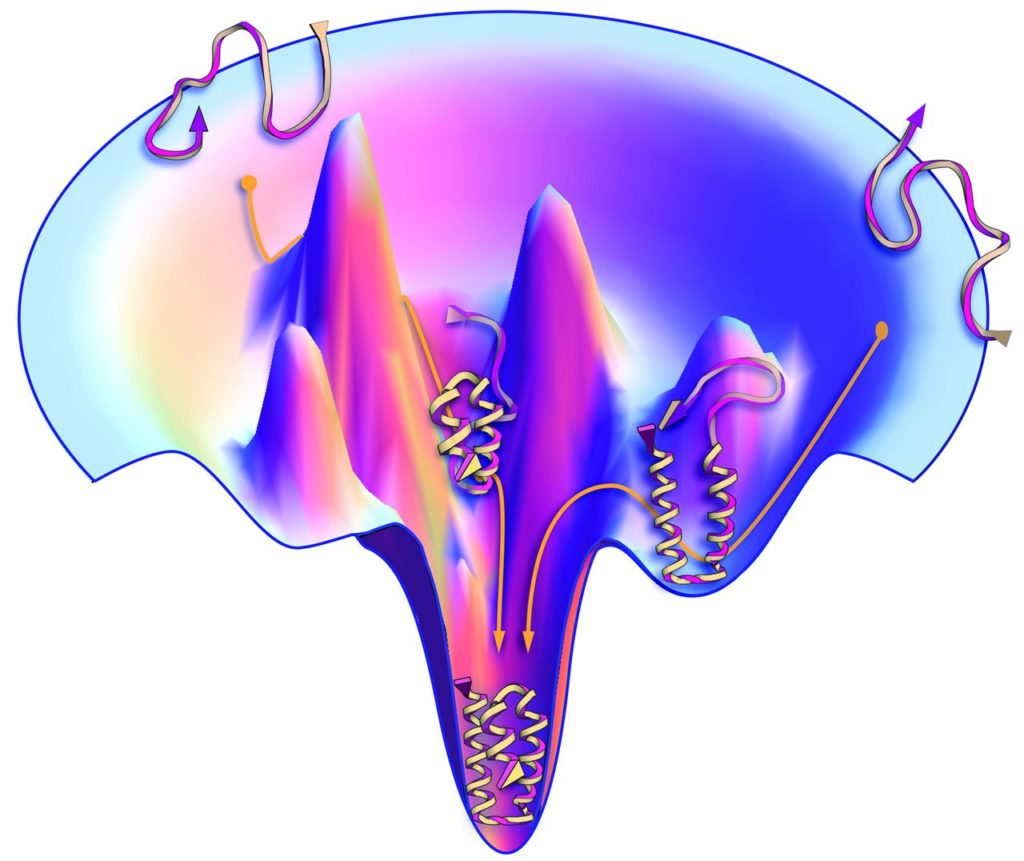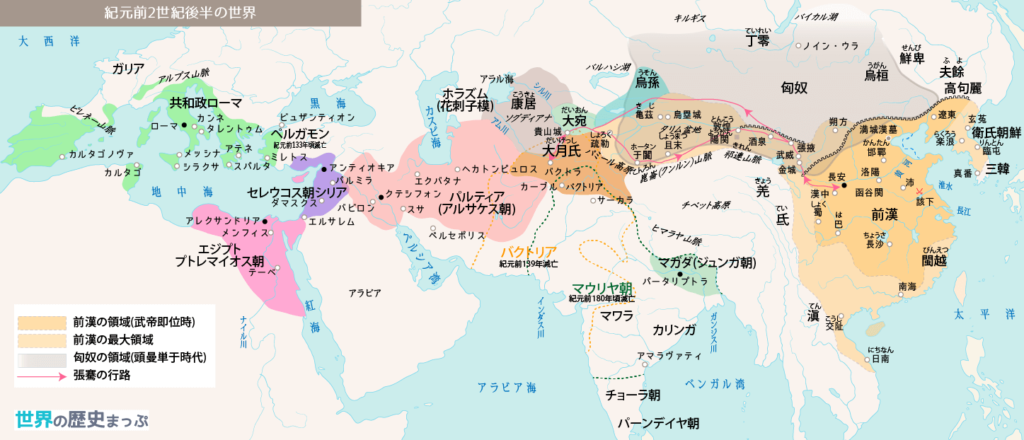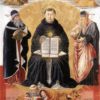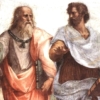【文化の重層性02】世界観モデルとしてのミュトスとロゴス
(アイキャッチ画像出典:University of Texas, Austin、プラトンの開設した学園アカデメイアは英語のacademyの語源)
以前の記事でロゴス(ギリシャ語、logos)について書いた。
ロゴスは西洋文化の第一層を支える強力基盤である。欧米人がギリシャを文明のゆりかごを称賛してきたのは、ギリシャ人の発見したロゴスが結果的にヨーロッパを後進地域から先進地域に引き上げてくれたからである。
ロゴスを獲得するまでの人類は、予測不能な自然界を、神々の姿を通じて理解するしかなかった。そのような思考様式をミュトス(mythos、英語のmythの起源)と呼ぶ。
ミュトスとロゴス
ミュトスとロゴスはどういう関係にあるのか、それが今回のお題である。関連する英文記事を紹介しよう(見出しは当サイトが読みやすさを考え付けたもの)。
In brief, “mythos” and “logos” describes the transition in ancient Greek thought from the stories of gods, goddesses, and heroes (mythos) to the gradual development of rational philosophy and logic (logos). The former is represented by the earliest Greek thinkers, such as Hesiod and Homer; the latter is represented by later thinkers called the “pre-Socratic philosophers” and then Socrates, Plato, and Aristotle.
ミュトスとロゴスは古代ギリシア思想の変遷を象徴するキーワードだ。男神や女神、英雄を通じた思考(ミュトス)は、徐々に合理的な哲学や論理(ロゴス)に置き換わっていった。ミュトスを代表するのはヘシオドトス(Hesiod)やホメロス(Homer)のような最初期の思想家であり、後者はソクラテス以前の哲学者たちに始まり、ソクラテス、プラトンを経てアリストテレスに至る思想家たちである。
In the earliest, “mythos” stage of development, the Greeks saw events of the world as being caused by a multitude of clashing personalities — the “gods.” There were gods for natural phenomena such as the sun, the sea, thunder and lightening, and gods for human activities such as winemaking, war, and love. The primary mode of explanation of reality consisted of highly imaginative stories about these personalities.
文化の黎明期、ミュトスの段階にあったギリシア人は、人格神たちの衝突が世界の出来事の原因だと考えていた。神々は太陽、海、雷、雷などの自然現象を司るとともに、ワインづくり、戦争、愛などの人間活動を司る存在でもあった。想像力豊かな物語を通じて身の回りに起こることを説明するのが彼らの基本的な世界解釈の方法だった。
ミュトス的世界に対する疑問とロゴスの台頭
However, as time went on, Greek thinkers became critical of the old myths and proposed alternative explanations of natural phenomena based on observation and logical deduction. Under “logos,” the highly personalized worldview of the Greeks became transformed into one in which natural phenomena were explained not by invisible superhuman persons, but by impersonal natural causes.
しかし時代が経つと、古い神話の説明に飽き足らない思想家が出現する。彼らは観察や論理的な推察(ロゴス)に基づいて自然現象を考えた。その結果、ギリシャ人の非常に擬人的だった世界観に大転換が起こる。外界の様々な現象はもはや不可視の超人的パワーによるものではない。人間とは無関係な自然的要因が引き起こすものと理解され始めたのである。
ロゴスはミュトスの対立概念ではなく発展形
However, many scholars argue that there was not such a sharp distinction between mythos and logos historically, that logos grew out of mythos, and elements of mythos remain with us today.
とはいえ、多くの学者は歴史的に見てミュトスとロゴを画然と分けることはできないと主張する。ロゴスはミュトスから生まれ、現在にも神話的思考は残っているのだ、と。
For example, ancient myths provided the first basic concepts used subsequently to develop theories of the origins of the universe.
We take for granted the words that we use every day, but the vast majority of human beings never invent a single word or original concept in their lives — they learn these things from their culture, which is the end-product of thousands of years of speaking and writing by millions of people long-dead. The very first concepts of “cosmos,” “beginning,” nothingness,” and differentiation from a single substance — these were not present in human culture for all time, but originated in ancient myths.
Subsequent philosophers borrowed these concepts from the myths, while discarding the overly-personalistic interpretations of the origins of the universe. In that sense, mythos provided the scaffolding for the growth of philosophy and modern science.
例えば、宇宙の起源についての理論を考えてみよう。我々が理論の足掛かりとする基本的な概念を生みだしたのは誰か。古代の神話の語り部たちである。
人間は毎日当たり前にことばを使っているが、新たにことばや概念を生み出す人は稀だ。人間は生まれ育った文化からことばを学ぶ。文化は先祖たちが何千年もの間、語り継ぎ書き継いできた考えの集積なのだ。 宇宙、起源、無、単一存在から差別化――、こうした概念は人類の誕生からそこに落ちていたわけではない。すべて神話が生みだしたのである。
宇宙の起源を知ろうとした後世の哲学者たちは、神話で過剰に擬人化された解釈は捨てたかもしれない。それでも多くの概念を神話から借用した。この意味においてミュトスは哲学と現代科学の発展の基盤となったのである。
ロゴスの記述とミュトス的な比喩の有用性
An additional issue is the fact that not all myths are wholly false. Many myths are stories that communicate truths even if the characters and events in the story are fictional. Socrates and Plato denounced many of the early myths of the Greeks, but they also illustrated philosophical points with stories that were meant to serve as analogies or metaphors.
Plato’s allegory of the cave, for example, is meant to illustrate the ability of the educated human to perceive the true reality behind surface impressions. Could Plato have made the same philosophical point in a literal language, without using any stories or analogies? Possibly, but the impact would be less, and it is possible that the point would not be effectively communicated at all.
さらに、神話という神話がすべて完全な作り話とはいえない。たとえ物語のキャラクターや出来事が絵空事であったとして、多くの神話は真実を含んでいる。ソクラテスやプラトンは古いギリシア神話の多くを非難しているが、神話的なアナロジーやメタファーを通じて哲学的要点を語った。
たとえば、プラトンは洞窟のアレゴリーを用いて、教養ある人間が表層的な現象の奥に隠された真実を認識する能力(イデア)について説明した。もしプラトンが物語やアナロジーを一切使わず、冷たい文章を書き連ねただけだったら、彼はその哲学的主張ができただろうか?できたかもしれないが、要点はうまく伝わらず、それほどの影響力は持たなかったはずだ。
寓意、寓喩と訳されるが、わかりにくい。要するに「ある概念を、具体的な事物や事件を通じて表現すること」である。目に見えない抽象的な概念はそのまま文章にしてもわかりにくい。たとえば、神話の場合、神の振る舞いやその結果を通じて、民族の大事な記憶、教訓、重んじる価値などを伝えるのである。現代でも、とくに芸術分野ではアレゴリーを多用している。
ミュトスは神々を通じた世界解釈
Some of the truths that myths communicate are about human values, and these values can be true even if the stories in which the values are embedded are false. Ancient Greek religion contained many preposterous stories, and the notion of personal divine beings directing natural phenomena and intervening in human affairs was false.
神話が伝えようとしているのは人間の価値観に関する真実である。物語が作りごとだからといって、そこに埋め込まれた価値観までも嘘だとはいえないだろう。確かに古代ギリシャの宗教には辻褄の合わないお話がたくさん含まれている。そこで自然現象を司り、人間の営みに介入する擬人化された神格は作りごとである。
But when the Greeks built temples and offered sacrifices, they were not just worshiping personalities — they were worshiping the values that the gods represented. Apollo was the god of light, knowledge, and healing; Hera was the goddess of marriage and family; Aphrodite was the goddess of love; Athena was the goddess of wisdom; and Zeus, the king of the gods, upheld order and justice. There’s no evidence at all that these personalities existed or that sacrifices to these personalities would advance the values they represented. But a basic respect for and worshipful disposition toward the values the gods represented was part of the foundation of ancient Greek civilization.
I don’t think it was a coincidence that the city of Athens, whose patron goddess was Athena, went on to produce some of the greatest philosophers the world has seen — love of wisdom is the prerequisite for knowledge, and that love of wisdom grew out of the culture of Athens. (The ancient Greek word philosophia literally means “love of wisdom.”)
しかし、人々が神殿を建て犠牲を捧げたとき、彼らは単に人格神を拝んでいたのではない。神々に託された価値を崇拝していたのである。アポロは光、知識、治癒の神であり、ヘラは結婚と家族の女神だった。アフロディーテは愛の女神、アテナは知恵の女神だった。神々の王ゼウスは秩序と正義を守護した。これらの人格神が実在した証拠はないし、彼らに捧げた供犠が彼らに託された価値を前進させたという証拠もない。それでも古代ギリシア文明の基礎に、神々に託された価値への敬意と敬虔な態度が存したことは確実だ。
知恵の神アテナが守護するアテネで、世界的に偉大な哲学者が生まれたのは偶然だろうか。知恵への愛は知識の前提であり、アテネの文化から知恵への愛が育ったのではないか。実際、古代ギリシア語のフィロソフィは「知恵への愛」を意味する。
It is also worth pointing out that worship of the gods, for all of its superstitious aspects, was not incompatible with even the growth of scientific knowledge. Modern western medicine originated in the healing temples devoted to the god Asclepius, the son of Apollo, and the god of medicine. Both of the great ancient physicians Hippocrates and Galen are reported to have begun their careers as physicians in the temples of Asclepius, the first hospitals. Hippocrates is widely regarded as the father of western medicine and Galen is considered the most accomplished medical researcher of the ancient world. As love of wisdom was the prerequisite for philosophy, reverence for healing was the prerequisite for the development of medicine.
また神々へ信仰が、迷信的な側面はあるにしても、科学的知識の成長に矛盾しなかった場合もあったことを指摘しておきたい。現代の西洋医学は、アポロ神の息子の医学の神アスクレピウスに捧げられた癒しの神殿に始まった。古代の偉大な医師ヒポクラテスとガレノスは、この神殿で治療を始めたと伝えられている。ヒポクラテスは西洋医学の父として広く知られ、ガレンは古代世界で最大の功績を挙げた医学研究者と考えられている。知恵の愛が哲学を生んだように、治癒への敬意が医学を生んだのである。
ミュトス的思考様式と現代の科学
Karen Armstrong has written that ancient myths were never meant to be taken literally, but were “metaphorical attempts to describe a reality that was too complex and elusive to express in any other way.” (A History of God) I am not sure that’s completely accurate. I think it most likely that the mass of humanity believed in the literal truth of the myths, while educated human beings understood the gods to be metaphorical representations of the good that existed in nature and humanity.
Some would argue that this use of metaphors to describe reality is deceptive and unnecessary. But a literal understanding of reality is not always possible, and metaphors are widely used even by scientists.
カレン・アームストロングによれば、古代の神話は字義通りに受け止められることをそもそも前提としていない。「あまりに複雑で、他の方法では理解しがたい現実を伝えるための比喩的な試み」だった(『神の歴史』)。この指摘が完全に正しいとは思わない。多くの人類は文字通り神話を本当だと思っていたろう。でも一部の教育のある人間は、神々とは、自然や人類のなかにある善なるものの比喩的表象であることを理解していたのではないか。
比喩で現実を表現するのは紛らわしいし、必要ないと考える人もいると思うが、現実は額面通りに理解可能とは限らない。科学者の間でさえ比喩は広く使われているのである。
比喩に助けられる科学モデル
Theodore L. Brown, a professor emeritus of chemistry at the University of Illinois at Urbana-Champaign, has provided numerous examples of scientific metaphors in his book, Making Truth: Metaphor in Science. According to Brown, the history of the human understanding of the atom, which cannot be directly seen, began with a simple metaphor of atoms as billiard balls; later, scientists compared atoms to plum pudding; then they compared the atom to our solar system, with electrons “orbiting” around a nucleus.
 イリノイ大学アーバナ・シャンペーン校名誉教授のテオドール・L・ブラウンは、その著書『真実を作る 科学におけるメタファー』において、科学的比喩の実例を数多く紹介している。ブラウンによると科学の説明モデルは人間の理解の深化の歴史だという。直接目に見えない原子を理解するために、人間はまず原子をビリヤードの球に譬えた。次にプラム・プディングに譬えた(※日本ではプラム・プディングに馴染みがないのでブドウパンに譬えられた)。最後にい原子を太陽系に譬え、電子が原子核のまわりを「周回する」と説明した。
イリノイ大学アーバナ・シャンペーン校名誉教授のテオドール・L・ブラウンは、その著書『真実を作る 科学におけるメタファー』において、科学的比喩の実例を数多く紹介している。ブラウンによると科学の説明モデルは人間の理解の深化の歴史だという。直接目に見えない原子を理解するために、人間はまず原子をビリヤードの球に譬えた。次にプラム・プディングに譬えた(※日本ではプラム・プディングに馴染みがないのでブドウパンに譬えられた)。最後にい原子を太陽系に譬え、電子が原子核のまわりを「周回する」と説明した。

There has been a gradual improvement in our models of the atom over time, but ultimately, there is no single, correct literal representation of the atom. Each model illustrates an aspect or aspects of atomic behavior — no one model can capture all aspects accurately. Even the notion of atoms as particles is not fully accurate, because atoms can behave like waves, without a precise position in space as we normally think of particles as having. The same principle applies to models of the molecule as well. A number of scientists have compared the imaginative construction of scientific models to map-making — there is no single, fully accurate way to map the earth (using a flat surface to depict a sphere), so we are forced to use a variety of maps at different scales and projections, depending on our needs.
こうして徐々に説明モデルは正確さを増したが、完全に正しい説明モデルはいまだに存在しない。個々のモデルは原子の挙動の一部は表現できても、挙動全体を正確に表現することはできないのである。原子を粒子とする概念も完全には正確な表現ではない。原子は、人間がそう思っているような厳密な空間的位置にとどまっているのではなく、波のように振る舞っているからだ。同じことは分子モデルについてもいえるという。想像上の科学モデルづくりは地図づくりに近いのだと多くの科学者はいう。 二次元に三次元を描く以上、球体である地球を精密に平面上に表現できる単一の地図などありえない。だから、ニーズに応じて縮尺や投影法を変えるしかないのである。
タンパク質フォーディングの比喩的説明モデル
Sometimes the visual models that scientists create are quite unrealistic. The model of the “energy landscape” was created by biologists in order to understand the process of protein folding — the basic idea was to imagine a ball rolling on a surface pitted with holes and valleys of varying depth. As the ball would tend to seek out the low points on the landscape (due to gravity), proteins would tend to seek the lowest possible free energy state. All biologists know the energy landscape model is a metaphor — in reality, proteins don’t actually go rolling down hills! But the model is useful for understanding a process that is highly complex and cannot be directly seen.
科学者が作成した画像モデルが非常に非現実的に見えるケースもある。たとえば、生物学者は、タンパク質の折り畳み過程を表現するのに 「エネルギー地形」というモデルを作成した。基本的なイメージ、様々な深さの穴や谷間のある表面を転がるボールだ。ボールは(重力の影響で)景観内の低位点を見つける傾向を持つ。つまり、実際のタンパク質は可能な限り自由エネルギーが小さい状態へ移行しようとする。地形モデルがメタファーであることを知らない生物学者はいない。現実の世界でタンパク質が丘の上を転がっているはずがないが、地形モデルは非常に複雑で直接観察できない過程の理解には役立つのである。

科学概念の理解に多用される擬人化や人間制度の比喩
What is particularly interesting is that some of the metaphorical models of science are frankly anthropomorphic — they are based on qualities or phenomena found in persons or personal institutions.
Scientists envision cells as “factories” that accept inputs and produce goods. The genetic structure of DNA is described as having a “code” or “language.”
さらに興味深いのは、科学の比喩的モデルの中には擬人化が施されているものがある点だ。そうしたモデルは、人間や人間の制度に見出される性質や現象をネタにしている。
たとえば、細胞のモデルは、材料を搬入して(インプット)商品を生産する(アウトプット)「工場」である。 DNAの遺伝子構造は特定の「コード」あるいは「言語」を有すると表現される。
The term “chaperone proteins” was invented to describe proteins that have the job of assisting other proteins to fold correctly; proteins that don’t fold correctly are either treated or dismantled so that they do not cause damage to the larger organism — a process that has been given a medical metaphor: “protein triage.” (Brown, chapters 7-8) Even referring to the “laws of physics” is to use a metaphorical comparison to human law. So even as logos has triumphed over the mythos conception that divine personalities rule natural phenomena, qualities associated with personal beings have continued to sneak into modern scientific models.
また、他のタンパク質が正しく折り畳まれるよう助けるタンパク質のことを「シャペロン・タンパク質」という(※シャペロンは付き添い人、補助者の意味)。正確に折り畳まれなかったタンパク質は、器官に悪影響を与えないように処理もしくは分解されるが、この過程は医療の識別救急(トリアージ)に譬えて「タンパク質トリアージ」と呼ばれる。また何気なしに「物理法則」といっているが、これは自然界の規則を人間の法律に譬えているのである。ロゴスは、擬人化された神々が自然現象を支配するというミュトスの考えに打ち勝ったかもしれないが、人間的な表象や特性はいまも最新の科学モデルに入り込んでいるのである。
ロゴスはミュトス的思考の発展形
The transition of a mythos-dominated worldview to a logos-dominated worldview was a stupendous achievement of the ancient Greeks, and modern philosophy, science, and civilization would not be possible without it. But the transition did not involve a complete replacement of one worldview with another, but rather the building of additional useful structures on top of a simple foundation. Logos grew out of its origins in mythos, and retains elements of mythos to this day.
ミュトスの支配する世界観からロゴスの支配する世界観へと移行したことは古代ギリシア人の途方もない功績だ。その功績なしに、現代の哲学、科学、文明は不可能だったろう。しかし、この移行によって古い世界観が完全に滅びたのではない。むしろシンプルな基礎の上に有用な構造物が積み上げられたと考えた方が真相に近い。ロゴスはミュトスに起源を持ち、ミュトスの苗床から育って、いまもミュトスの要素を保持しているのである。
<記事引用終わり>
ミュトスとロゴスは相互補完関係にある
一般教養書や学校の教科書は、いまだにミュトスからロゴスへの転換を賛美する俗説を垂れ流す傾向がある。たいていBC6世紀頃の小アジア(現在のギリシャに面したトルコ)の交易都市で活躍した哲人たちあたりに起源を求め、火だの水だのリニアな起源論発展史が展開されて、その終点にソクラテスが現れ、真打プラトンとアリストテレスの登場となって大団円である。この多分に西洋人の主観的フィルターのかかった(19世紀的な)歴史ストーリーには注意してほしい。
たとえば、交易都市というならギリシャ外部からの影響を考えなければならない。なぜ突然、ギリシャ人はロゴスに目覚めたのか?金持ちになって暇を持て余したから?あちこちが戦争に明け暮れ、世をはかなんだから?
当時はフェニキア人やエジプト人が活躍していた時代であり、小アジアの向こう側にはペルシャが迫ってきていた。ギリシャはイメージほどの先進地帯ではなかった。古代オリエント世界から見れば東端の辺境である。
プラトンは本当に合理主義者なのか?
またロゴスの殿堂に入れられたプラトンは複雑怪奇な人である。合理思考の一方で神秘思想に深く根差していた。岩波文庫に入っていない著作に彼の本領は発揮されていたりする。
たとえば、アレクサンドロス大王は遠く西インドや中央アジア近くまで侵略を進めたが、彼の部将がグレコ・バクトリア王国(Greco-Bactrian Kingdom、地図の大月氏。これは中国側の呼称)を建てた。この国の王族がプラトンの縁戚に当たるという(考古学的証拠はない)。

プラトンのイデアは理性を超えた “超理性的な” 真理を指しており、少しもロゴス的な概念ではない。プラトンの問いは、凡人にイデアが見えないことではなく、優れた人間でさえ金銭や名声や肉欲に囚われ、彼らには見えていたはずのイデアを忘却していくのはなぜかに向けられていた。
また彼のイデア論は、輪廻転生や不死の霊魂(psyche、プシュケー)といった “非西欧的な” 世界観をベースにしている。オルフェウス教といったギリシャで流行った秘儀宗教(そこを通じてのピタゴラス教団、ピタゴラスは一般イメージと違ってかなり妖しい人だ!)や、そのベースとなったとされるエジプトやイランの秘儀宗教(イシス、ミトラ、ゾロアスターなど)の影響が取りざたされている。人的つながりとしてはイランの神官階級マギとの交際が推定されているくらいだ。しかし、西洋主流のアカデミズムではこういう方面は半ばタブー視されていて、残念ながらヒントがあるだけで遅々として研究は進展しない。
二つの思考の型、人間の宿命
ミュトスはロゴスによって滅んだ迷信的な思考様式なのではない。二つは人間が人間である限り逃れられない思考の型なのである。
プラトンのいう “超理性的な” 真理を、神話は寓意(ミュトス)で伝えようとした。プラトンの時代には、それを対話という言語(ロゴス)で伝えようとした。その違いがあるだけだ。どちらにしても、何物かを介してしか他者には伝ええない点で共通している。
この人間存在の矛盾はどんなに自然科学が発達し、優れたAIができても変わりないだろう。”超理性的” なものは文字によっても数字によっても語りえないからだ。
だからこそ神秘思想は廃れないのである。なぜなら、神秘思想とは特殊な技術を介して、理性を超えた真理(神)と直接結びつこうとする試みだからだ。
文化の重層性ということでいえば、ミュトスはこの神秘思想のある第二層の基盤にある思考の型であり、第一層のロゴス的「男社会」のインスピレーションであり続けてきたのである。












ディスカッション
コメント一覧
まだ、コメントがありません